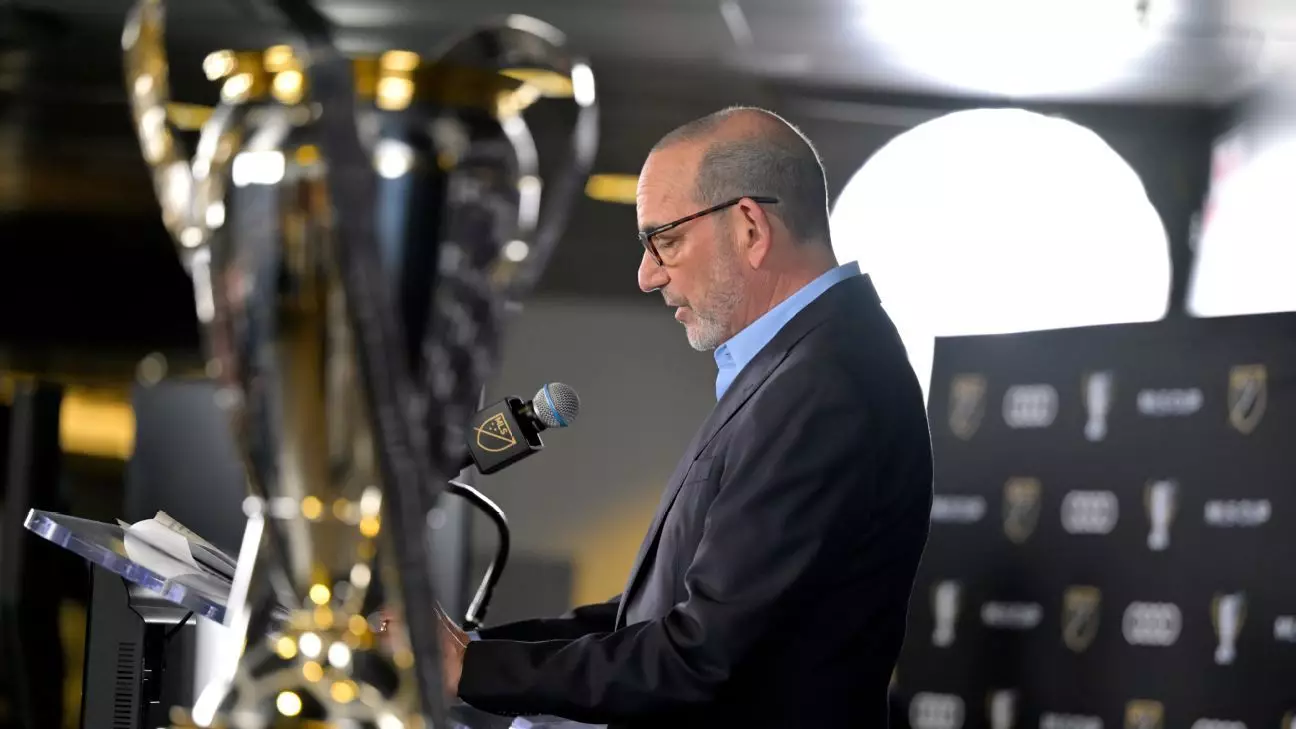Major League Soccer (MLS) is at a crossroads, grappling with the complexities of an evolving calendar as the league contemplates restructuring its schedule. Speaking during his annual State of the League address in Carson, California, MLS Commissioner Don Garber highlighted both the opportunities and obstacles that lie ahead as the league explores alignment with European football’s seasonal calendar.
The Case for Calendar Alignment
The ongoing discussion around aligning the MLS season with the European model has resurfaced multiple times, with Garber hinting at increasing momentum for a potential shift. Previous attempts to transition to a fall-spring schedule were considered during the 2004-05 and 2014-15 periods but ultimately did not come to fruition. Now, the pressure is mounting as the MLS deals with an increasingly congested calendar, compounded by the demand from international competitions.
Garber acknowledged that the summer month of June has become particularly crowded due to the plethora of international tournaments. This has prompted a need for reevaluation of the current February to December format that has been the league’s staple for years. “It’s not something that we’re ready to talk about right now,” Garber noted, indicating the deliberative nature of the process. However, the increasing clamor for a more synchronized schedule reflects both the aspirations of the league and the challenges it currently faces.
The MLS is also contending with the dynamics of multiple tournaments that further complicate the schedule. Alongside the traditional league matches, the league is now responsible for managing the Leagues Cup, U.S. Open Cup, and other international competitions, including the prestigious Club World Cup slated to occur in 2025. Garber pointed out that the tournament landscape may result in diminished participation from teams across the board, a consequence of the limited time available.
Interestingly, participation in the U.S. Open Cup has dwindled, with only eight teams partaking in the 2024 iteration. The commissioner expressed hope for a revival in participation, proposing that more teams should have the chance to compete for titles, ultimately enhancing fan engagement and creating a more vibrant competitive atmosphere. Senior management acknowledges the necessity to find a balance that allows teams to participate in at least one tournament while maximizing opportunities for success.
The Rise of Rivalries
Another significant development for the league involves the restructuring of the Leagues Cup format as Garber emphasized the importance of enhancing the rivalry between MLS and Liga MX. With only 18 of the 30 MLS teams expected to participate next season, the commissioner’s vision is to cultivate fierce competition that not only draws fans but elevates the overall profile of each league.
The expansion of rivalries is particularly crucial for the league’s growth, appealing to a fanbase that is increasingly hungry for high-stakes matches that bridge geographical and cultural divides. Such initiatives are not just about immediate viewership returns but rather fostering a sustainable competitive environment that can withstand the test of time.
Lionel Messi’s arrival at Inter Miami has undoubtedly transcended the expectations of league officials and fans alike. Garber reflected on how Messi’s presence has not only attracted unprecedented crowds but also significantly boosted the league’s profile. Despite Inter Miami’s exit from playoff contention, the Argentine superstar remains a focal point of excitement, contributing to an elevated experience for fans both at home and away.
The commissioner pointed out the emotional connection Messi has formed with fans and the undertaken initiatives that capitalize on his star power, further enhancing the league’s visibility. The outpouring of affection from fans during away games attests to the transformative impact Messi has had, illustrating how one player’s influence can extend far beyond the pitch.
Digital Engagement and Viewership Dynamics
Another element of discussion during Garber’s address revolved around the league’s partnership with Apple TV, which has redefined how MLS engages with its audience. Although specific statistics were withheld, Garber conveyed a sense of optimism regarding viewership numbers, emphasizing the importance of collective viewership across multiple games rather than singular metrics.
As MLS fans diversify their engagement through streaming platforms, the league must find tailored ways to assess success in a rapidly changing broadcasting environment. This sublime shift hints at a future where intentional viewership could redefine how modern sports leagues evaluate audience engagement and viability.
The Path Forward
Ultimately, Garber envisions a landscape where MLS becomes more competitive on the global stage. He emphasized that while roster spending may not see drastic increases, there are ongoing discussions on how to empower teams within the current financial framework. The commitment to maximizing efficiency and resource utilization remains crucial as the league strives for pronounced improvement.
In closing, the MLS is navigating a period of significant change, characterized by scheduling conflicts, burgeoning rivalries, and an evolving digital landscape. As these adjustments unfold, the league is positioned to harness its growth potential, ultimately shaping a vibrant and compelling future for American soccer.

